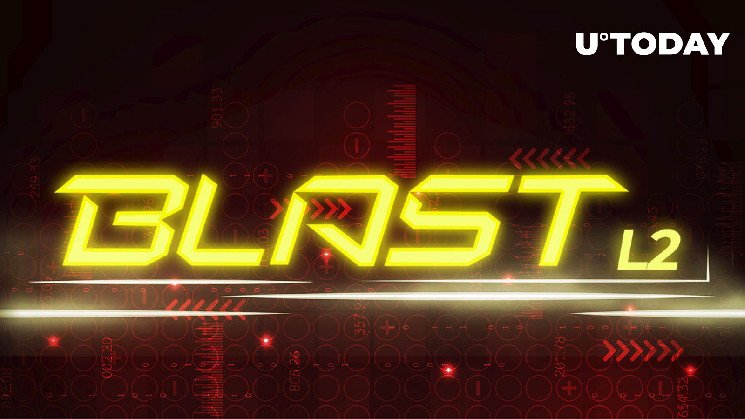Ethereum (ETH) veterans and DeFi analysts indicated more and more risks associated with what is arguably the fastest-growing crypto network by TVL. Its hotly anticipated 2024 airdrop might not be as generous as it seems, and the network itself might be abusing the L2 narrative.
Blast: Ethereum L2 or not?
Ethereum-based protocol Blast using L2 label is the result of a trend for “marketing single-node chains as Ethereum L2s.” Arbitrum’s Offchain Labs’ cofounder Steven Goldfeder attributes this confusing status quo to the silence of the Ethereum (ETH) community.
This is funny but also such a sad reflection on the state of many abusing the term L2 for marketing/growth.
By staying silent as our friends and some of our most trusted brands marketed single-node chains as Ethereum L2s, we’ve created a trend that has now grown much larger.… https://t.co/snoYHJaOq2
— Steven Goldfeder (💙,🧡,🖊️,🦀) (@sgoldfed) November 22, 2023
As such, in may cases, the narrative of L2 scaling is only used by projects to bootstrap marketing and growth activities. In recent times, this trend “has grown much larger” as the industry created a monster.
Goldfeder commented on one of the promo materials that illustrate the tech solution of Blast. Developers of Blast insist that the product is better than Optimism and Arbitrum since dominant Ethereum L2s fail to offer native yield programs and sharing gas initiatives.
Also, per the Blast promo, both of them are limited in incentives for liquidity providers and contributors. Blast creators stressed that the new product brings 10x more value compared to leading Ethereum L2s.
However, some analysts and developers opined that it should be described as a sidechain solution protected by a multi-sig contract. For instance, one of the first Dune dashboards on Blast created by 21 Shares demonstrates a disclaimer:
Note: Blast is not an L2 yet but they have started allowing users to deposit via a multi-sig contract.
Some other trackers such as L2Beat listed Blast in the “upcoming” section. As of press time, the project amassed over $260 million in TVL, surpassing Starknet, Scroll and Polygon zkEVM.
Blast airdrop math might disappoint farmers
As covered by U.Today previously, the euphoria around Blast might result in a liquidity crisis for Ethereum (ETH) as its first unlock is set to happen in February: depositors will not be able to withdraw a single coin in three months.
The majority of Blast liquidity providers are most likely interested in receiving a retroactive airdrop. At the same time, a DeFi analyst who goes by @stacy_muur on Twitter compared the prospects of the Blast airdrop to some recent campaigns.
I don’t get why you farm Blast.
Simple math ↓In just two days, @Blast_L2 has gathered 38K airdrop participants.
This number is equivalent to the users who received the $PYTH airdrop this week, which was valued at $75M.
On average, $PYTH farmers received $2K per wallet.…
— Stacy Muur (@stacy_muur) November 23, 2023
At current numbers, the average airdrop bonus might only be around $700 in equivalent, which pushes the yield ratio to a mediocre 10%.
Launched on Nov. 21, 2023, Blast promotes itself as the first Ethereum (ETH) L2 with native yield opportunities. It restakes all injected liquidity in Lido and in Maker’s T-bills program.
Read the full article here
